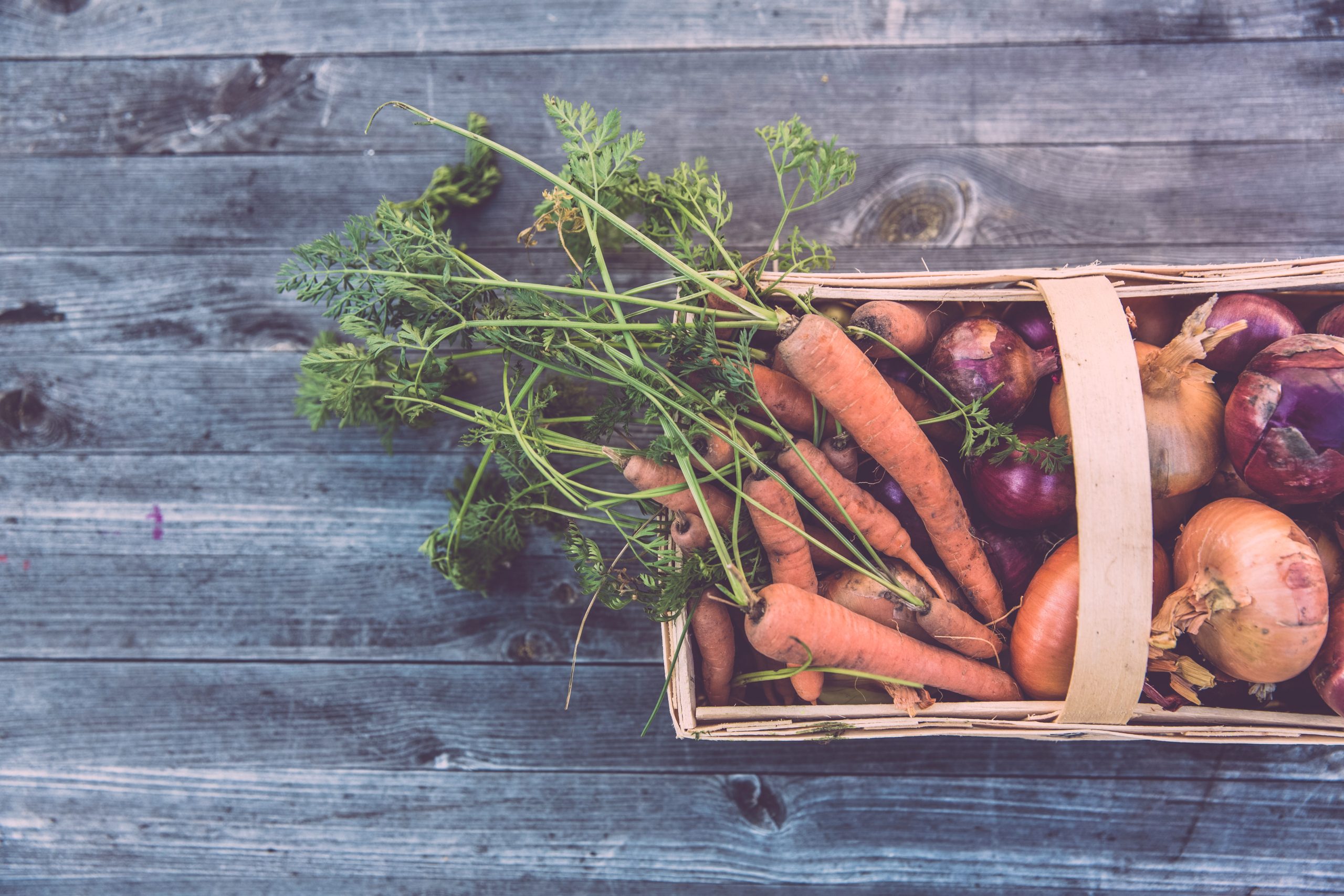Choosing to eat locally-grown food is the first step towards maximizing our nutritional potential. Why?
Local food is fresher. If you are lucky enough to have access to land to grow food, you know how tasty freshly picked foods are. Those of us who do not have gardens can obtain fresh food at farmers’ markets, where the produce for sale is harvested the day before, if not the morning of the market. The food doesn’t sit around for weeks or months like it does in grocery stores. The fresher the food, the more nutrients are preserved through to the time we eat them.
Foods with greater mineral content. Smaller farms do not have the pressure from distributors and retailers to produce high yields of the same crop. This enables them to use techniques like companion-planting and crop rotation to keep soil from losing too many minerals. Use of manure, compost, and rock dust in combination with these farming methods reduce the risk of soil exhaustion, resulting in healthier, more nutrient-dense crops. Compare this to soils on large-scale farms that are typically nourished only with petroleum-derived nitrogen, potassium and phosphorous-based fertilizers. That’s incomplete plant nutrition. Deficiencies in minerals like selenium, zinc, chromium and iron weaken the plant against harsh weather and insects. The result for the plant’s consumer is reduced nutrition as well.
Foods with higher vitamin C content. According to Bernard Jensen and Mark Anderson—authors of the book Empty Harvest—foods grown in soil with higher mineral content results in crops with higher vitamin C content. Plus, since vitamin C is a nutrient whose concentration in food deteriorates with time, buying freshly harvested foods maximizes our ability to receive the nutrient that’s so important to immunity, as well as collagen formation of teeth, bone, skin, blood vessels, and more.
Foods with a higher content of antioxidants per serving. In his book The Dorito Effect, Mark Schatzker shares his idea that the appeal of junk food that’s brightly coloured is due to the fact that naturally vividly-coloured foods are the most nutritious. Local farmers often grow a wider variety or different colour of vegetable (such as purple asparagus). This is in contrast to the chain supermarkets that demand high yields from growers and request consistency in the physical features of various fruits and vegetables.
Did you know antioxidant levels can be measured by assigning an ORAC score? This is essentially a way to quantify the potential of a food to neutralize free radicals. Here are some examples:
- Black kale (or dinosaur kale) has more lutein that curly kale
- Purple peppers, purple carrots and blue potatoes have proanthocyanins while their conventionally coloured varieties do not.
Remember: the darker the better!
The lie of the ‘baby carrot’
I suspect part of why people who hate carrots dislike them is thanks to those ‘baby’ carrots sold in grocery stores. These are actually shaved-down, physically inferior carrots that have been sterilized, making them unremarkable-tasting and nutritionally depleted. In comparison, a freshly picked carrot will be sweet, with a vaguely floral aroma. You must taste one to believe it!
So if there’s a food you don’t like, I encourage you to taste it again–-this time, fresh and locally grown. (It happened to me with Brussels sprouts. I could not stand them—until I agreed to taste freshly picked and cooked local ones. Imagine my surprise when I detected absolutely no bitterness. The moral of the story is, freshness really influences flavour!
What fruit or vegetable will you be looking to try again this summer?

